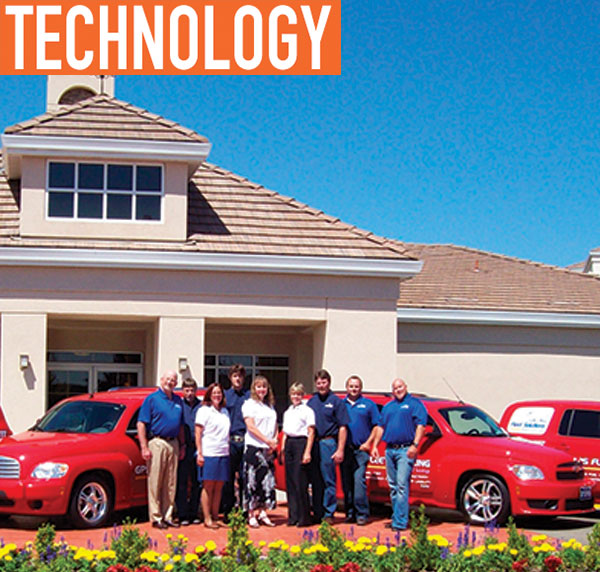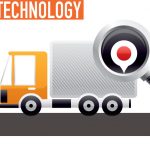Across the nation, in both commercial and government fleets, accountability is the primary concern of managers and directors. And, it is more than, “Where is my vehicle?” Today’s telematics is far more than a dot on a map.
Today, we are being asked how long a vehicle was at a jobsite and was the PTO engaged or not? The ability to create geofences and record miles and minutes within the geofence has become critical. This benefits you in job costing, and efficiency of your crew. In some states, time spent within a geofence can lead to fuel tax rebates while the vehicle was off of streets and roads. One animal control jurisdiction uses miles in a geofence, rescuing pets and livestock and then applying for a FEMA fuel reimbursement in natural disasters.
INCREASED CONTROL
Great cost savings are realized with scheduled maintenance and available Diagnostic Trouble Codes (DTC). Your preventive maintenance is better scheduled, and both the shop and driver are notified by preset calendar days, miles driven, and/or engine hours when the vehicle is due. With today’s diesel engines, you may need to know when the particulate trap needs service and know it before it goes out on a run. Failure to clean that trap at the appropriate time can result in a blown engine with thousands in costly repairs or replacement.
If you are in an area of the country that has mandated smog checks on an annual or bi-annual basis, telematics can—in addition to reminding you when a vehicle is due—tell you if it will pass or not before you take the vehicle in. The obvious and easiest is a report indicating when the Malfunction Indicator Lamp (MIL)—or check engine light—is on. Most systems will send you a DTC alert and tell you what that alert is. In the case of a smog check, you’ll be able to make sure repairs are made and that the vehicle will pass before you take it in for the smog check.
Currently, California accepts the smog check reports for government fleets to opt into a continuous smog testing, and alleviates the standard smog check if it continues to pass. It is believed that commercial vehicles will soon follow for light-duty vehicles.
DISPATCH MANAGEMENT
Many companies and agencies take advantage of the dispatching tool. In that use, you can find the closest vehicle to the service call and can give the customer an estimated time of arrival based on normal traffic.
Most significant is your ability to decide which vehicle has the employee with the proper skill set, tools, and equipment to complete the task. This greatly reduces your response time and delivers a satisfied customer who receives a prompt response. You can also dispatch the closest vehicle to another one of your vehicles who may need assistance. The system provides turn by turn directions, which can be forwarded to your driver.
It is highly recommended that if you are a service company and a customer calls requesting service, you respond by saying, “Yes, we have GPS on our vehicles and our technician, Joe, is about five miles away from you. He should arrive in about 10 minutes.” This leaves a favorable and lasting impression in your customer’s mind.
Many companies travel to different states as part of their business function. If you are paying prevailing wage in another state, the ability to assure that your out-of-town team arrived at the jobsite on time can represent big savings for your company.
TURN OFF THE IGNITION
One of the standard battle cries of GPS companies is about reducing idle time. We all know that excessive idling wastes fuel. Being able to monitor idle time and use it as a coaching tool for employees is putting that function into a useful context. Our Carlos story is about a man who fills up his tank every seven days. I challenged him to turn the ignition off when he’s talking on his cell phone in his driveway or in a parking lot before going into a store. Just turn off the ignition.
The goal was to shave five or 10 minutes here and there. After a month, a previously very skeptical Carlos admitted that he was now filling his tank every 10 to 11 days instead of every seven. He said it was saving him an average of about $40 in fuel per week, translating to more than $160 per month. The coaching model says if employees will save that in their personal vehicles, they will see the value in saving it in the company vehicle.
Accountability is a necessity in today’s world in all areas of business, as well as with our fleets. Telematics has never been designed nor intended to serve as a “big brother” over employees. Rather is it a tool that helps to hold down expenses and improve our productivity.
MANAGEMENT GOALS
There is an old saying: “You can only manage what you can see and measure.” Cost containment and uptime are the most critical elements when dealing with the fleet. Knowing your maintenance schedule and knowing when a code is thrown helps keep your vehicles on the road, functioning, and making you money. Managing employees and their activities helps with cost control and in documenting job costs to help you improve bidding a job.
Our goal is to keep equipment and employees working. With better management of the company or agency assets, we have a healthier work environment. We are accountable to those who pay our salaries, and reap the benefits of our skills and our work.

FOR MORE INFORMATION:
USA Fleet Solutions was founded in 2006, by Steve and Laurie Yarborough, for the purpose of adding value of remote engine diagnostics to current fleet customers. The company has since grown into a national company, servicing small businesses, as well as large government fleets. Find out more about USA Fleet solutions, visit www.usafleetsolutions.com.
_______________________________________________________________________
MODERN WORKTRUCK SOLUTIONS: JANUARY 2017 ISSUE
Did you enjoy this article?
Subscribe to the FREE Digital Edition of Modern WorkTruck Solutions magazine.
![]()




